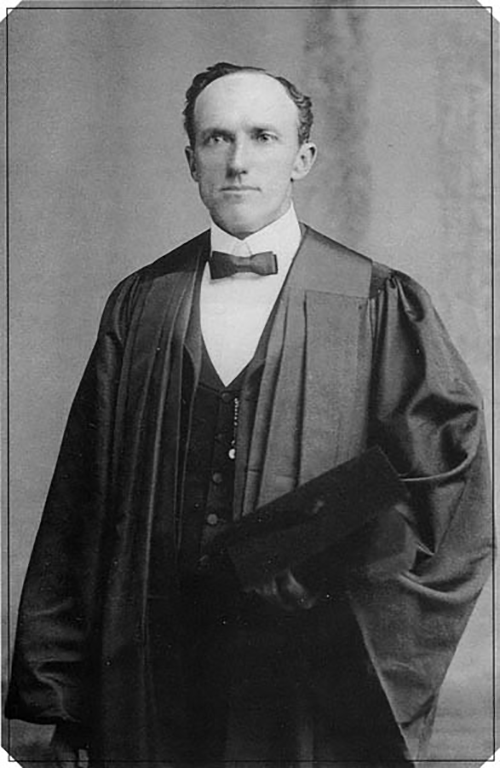Born in Warren County, Illinois, in 1865, Edgar Lee Hewett made a career as an educator in the Midwest during his early adult life. In 1894 he took a post as the Superintendent of the Colorado Normal School at Greeley. There, he initiated archaeological investigations of the surrounding area. His first fieldwork took place on the Pajarito Plateau—today’s Bandelier National Monument.

Courtesy of Palace of the Governors Photo Archives (NMHM/DCA), No. 007324.
In 1898 he began work as president of the Normal University at Las Vegas, New Mexico (present-day New Mexico Highlands University). Along with his duties as university president, he became more deeply involved in archaeological fieldwork at sites throughout northern New Mexico. His work inspired him to pursue a doctoral degree in archaeology at the University of Geneva, which he completed in 1903.
Hewett’s outspoken nature and willingness to wade into controversy earned him the nickname “El Toro.” Those qualities served him well as he transitioned from his work at the Normal University to become an advocate for the preservation of Native American antiquities in the Southwest. Not long after working to secure the passage of the Antiquities Act, he received a new appointment as the first director of the School of American Archaeology, located in Santa Fe. As director, he focused on promoting academic archaeology to a wide audience.
Under Hewett’s direction, the School of American Research (which had been renamed in 1917; the name was changed to the School for Advanced Research in 2007) supported Native American artists in the promotion of their history, culture, and crafts. In 1922, the School was one of the leading sponsors of an event called the Southwest Indian Fair that brought regional Native American artists to the Santa Fe plaza to display and sell their wares. The fair became an annual event, today known as the Santa Fe Indian Market.
Along with directing the School, Hewett led the Museum of New Mexico which displayed and promoted the findings of local archeologists. At the Museum, the photographs of Jesse Nusbaum supplemented exhibits that featured artifacts from northern New Mexico. Hewett’s promotional efforts attracted tourists to the museum to learn about the area’s ancient past, as well as about the Native American and hispano peoples that continued to inhabit the region.
When he died in 1946 at the age of eighty-two, Hewett continued to head both the School and the Museum. Over his lifetime, he had gained a reputation for combining cultural tourism and archaeological research in northern New Mexico.